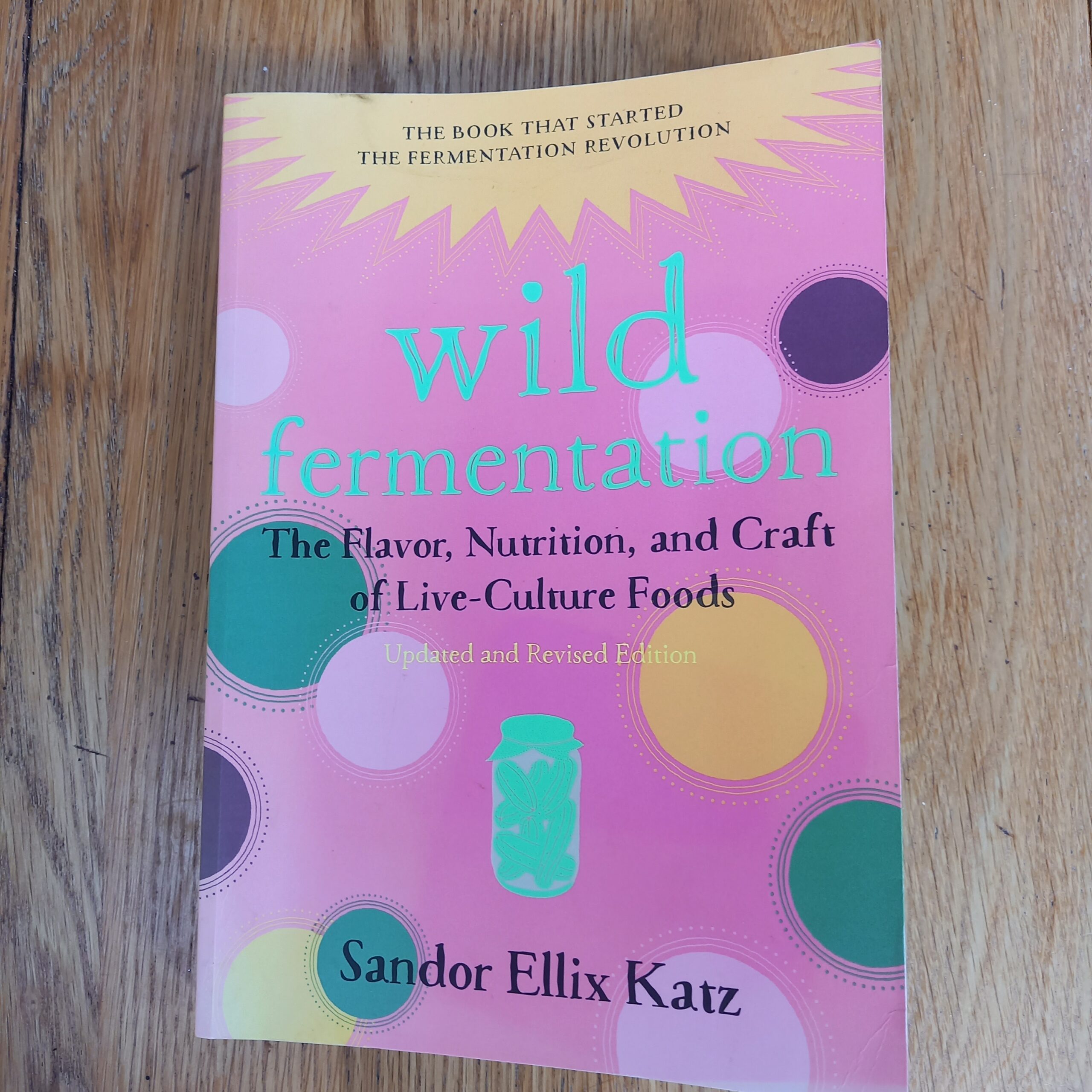This book fills me with joy, that’s because normally when I go to it, I’m planning on fermenting something. Fermentation is a natural process through which microorganisms like yeast and bacteria convert will carbohydrates — such as starch and sugar — into alcohol or acids. Wild fermentation utilises naturally occurring microorganisms. It’s like nature’s magic.
This week, due to some unusual success in the garden, I have grown a pickle! Given the right growing conditions, I may have more than enough to ferment. To be precise, it is a cornichon according to the label, which when pickled will be a gherkin. The Americans refer to them as pickles although technically they use pickling cucumbers which are different to cornichons! I remembered Sandor Katz talking about pickles, having developed a taste for sour pickles when growing up in New York, so I knew there would be a recipe in his book.
Sandor Katz undoubtedly has a fetish for fermentation and his enthusiasm is contagious. The original edition of this book was published in 2003 by which point Sandor had already started his renaissance of this traditional technique. The book explains his own story and how his experience and knowledge grew through living in a fermenting community, growing their own food, and travelling the world, investigating first hand many traditional fermentation techniques as well as meeting like minded fermenters. His enthusiasm has endured and I’ve now met him a couple of times when he’s been over in London where fermentation is now on trend.
When directing us to ferment, Sandor’s instructions will always tell you a story and then take you on a journey as there is never just one way. Your own way will be unique. Yet quite often the instructions are very simple. Put fresh cucumbers in a jar covered with brine then wait. Yes, Sour pickles or gherkins are preserved using lactic acid and not acetic acid (Vinegar). Naturally present bacteria ferment the sugars in the cucumber and produce lactic acid and this is how the magic begins.
The story and options to personalise your very own pickles are enticing. Even if like me, on this occasion, you don’t actually do anything, but just enjoy reading the book with its many fascinating pictures.
This is definitely a great book for beginners as it is relatively concise and covers a variety of fermentation techniques. It has chapters for Vegetables, Beverages, Dairy, Grains, Beans, Wines, Beers and Vinegars showing the breadth there is to fermentation. It also uniquely covers the many benefits with the need for microbial co-existence explained; the theory and how over history the science has evolved. It also looks at how this type of food processing counters the uniformity of mass-produced food. This is a topic that Sandor further expands upon in his book “The revolution will not be microwaved”.
If you want to further expand your knowledge or require an excellent reference book its worth investing in “The Art of Fermentation.”
So why not start a little food revolution yourself!
If you want to join a community of like minded fermenters do get in contact with me or look to see if you can attend a face to face event.
Originally posted on



